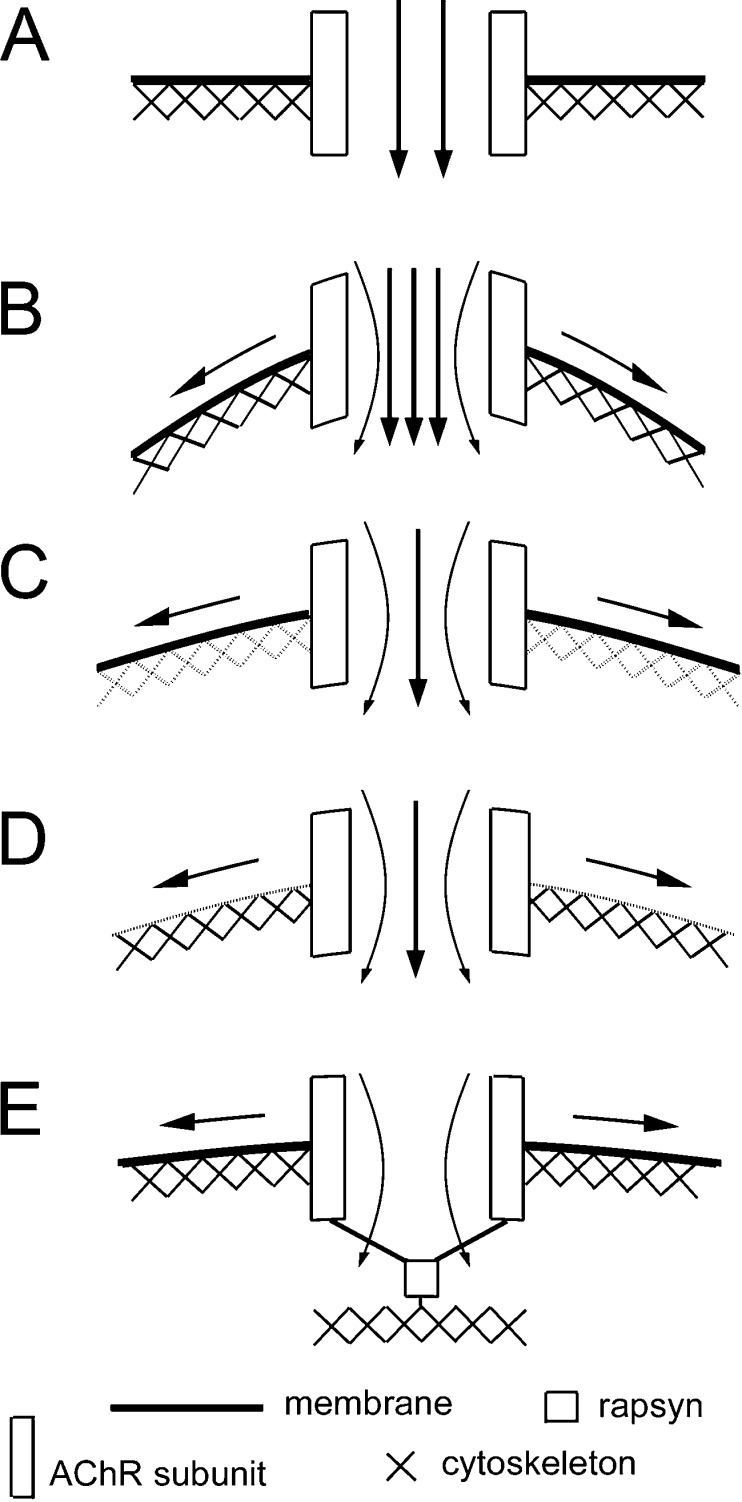Fig. 7.
A model on the regulation of AChR mechanosensitivity by the membrane and the cytoskeleton. a Channel opening under zero negative pressure. As a transmembrane molecule, AChR’s gating property can potentially be influenced by the mechanical properties of the membrane and the cytoskeleton. b Under negative pressure application through the recording pipette, the tension generated along the plane of the membrane causes increased channel activity. c Disruption of the cortical F-actin cytoskeleton by latrunculin A of cytochalasin D reduces the influence of the membrane stretch force on the receptor, leading to a decrease in channel activity. d Membrane lipid modification that reduces its stiffness such as cholesterol depletion by MβCD also reduces the stretch force experienced by the receptor and the mechanosensitivity. e Rapsyn, through its interaction with AChR subunits, anchors the receptor complex to the cytoskeleton to lessen the impact of membrane stress on its gating, thus reducing the mechanosensitivity

